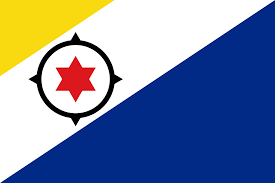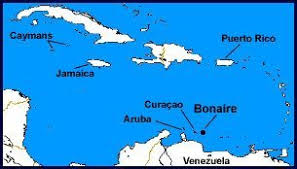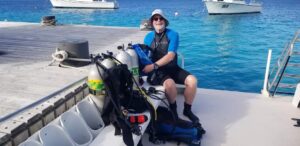 I spent a week on the island of Bonaire just off the coast of Venezuela. The scuba diving was spectacular. I went with Tim Schaeffer who not only was one of my former fourth grade pupils more than 40 years ago but has become a trusted friend and dive buddy. I marvel at his patience with some of the “rookie” mistakes I made and his thoughtful guidance, gentle hand in making corrections, and concern for my safety and well being. I will treasure these trips and hope more are to come.
I spent a week on the island of Bonaire just off the coast of Venezuela. The scuba diving was spectacular. I went with Tim Schaeffer who not only was one of my former fourth grade pupils more than 40 years ago but has become a trusted friend and dive buddy. I marvel at his patience with some of the “rookie” mistakes I made and his thoughtful guidance, gentle hand in making corrections, and concern for my safety and well being. I will treasure these trips and hope more are to come.
 Bonaire is an interesting island. Brenda Yorke (http://www.h2ovisionsbonaire.com), a resident of Bonaire and long-time friend of Tim’s, kindly gave me a very informative tour of the island and pointed out many interesting cultural and archeological points of interest (more to come with pics in a future post). Many thanks to Brenda.
Bonaire is an interesting island. Brenda Yorke (http://www.h2ovisionsbonaire.com), a resident of Bonaire and long-time friend of Tim’s, kindly gave me a very informative tour of the island and pointed out many interesting cultural and archeological points of interest (more to come with pics in a future post). Many thanks to Brenda.
The local language, Papiamentu–spoken on Bonaire and Curaçao, is a creole language (a language that develops naturally by simplifying and mixing multiple languages into one). It is mostly Portuguese with a lot of Spanish and Dutch mixed in with likely influences from the early native Antillians that inhabited the island prior to the Spanish occupation in 1499. The island has a tropical arid climate and it’s landscape is pretty much limestone mountains and cactus. Flamingoes abound on the island. A nice Trivial Pursuit item is that Pink Flamingos are born with white feathers and gain their pink hue as a result of the diet they eat. I shudder to think what color I’d be based on my diet !!!

But, as a diver, you couldn’t ask for a better place to dive. You are free to shore dive anywhere you like, grab you tanks and gear and simply walk into the water. Now that’s diving freedom. During the week I was there, however, we went out boat diving to designated sites around both the island of Bonaire and Klein Bonaire (Little Bonaire). Since we were the only two divers staying at the resort, we had the entire 18-person dive boat to ourselves–in addition to the guiding hand of two excellent dive masters, Sherman and Lou. Both dive masters were patient, kept the dives within my capabilities, and pointed out whatever there was to see along the way.

The dive boats (and all others) are only allowed to stop at designated mooring buoys in order to protect the coral reefs from the damage of anchors and chains. There is a gentle sloping bottom to about 30-40 feet deep that is sandy bottom about 30-100 feet out from shore. Then it sharply drops off to a bottom somewhere around 200-250 feet (or…to Infinity and Beyond). Light doesn’t penetrate more than 200 feet in water so looking down was like looking into the dark abyss! From about 60 feet and up, the water is almost clear (a little sediment kicked up by winds a few days) and fish galore–they seem to have no fear of humans and several swam over to check me out. Thankfully, the barracuda simply stayed away cautiously eyeballing us. I have little doubt they wondered if we were crunchy on the outside; chewy on the inside. Other than one turtle and a green moray, we didn’t see much in the way of big critters, but the small colorful ones were enough for me. At one point, we were surrounded by a school of coal black fish (fish identification is on my list of things to learn) who allowed us to swim lazily along with them for several minutes totally surrounding me. It only takes one dive to realize how truly insignificant we humans are in the greater realm of things on earth and what a privilege it is for the sea critters to allow us to share their world. I don’t know why I didn’t start diving years ago.
Pasa un bon dia, my friends !
